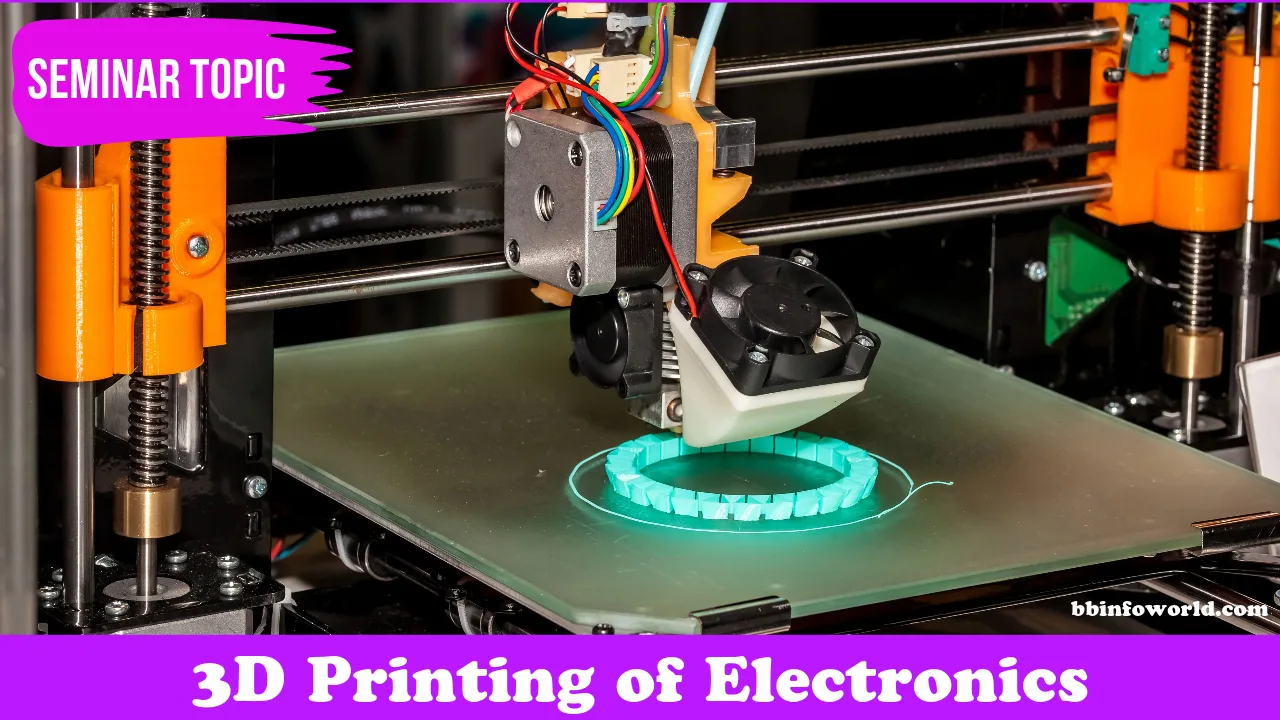
3D Printing of Electronics
Investigate additive manufacturing techniques that enable the creation of intricate electronic components and devices, revolutionizing the design and manufacturing process.
3D Printing of Electronics: Revolutionizing Design and Manufacturing
Introduction:
3D printing, also known as additive manufacturing, has transformed various industries by enabling the creation of complex structures layer by layer. In the realm of electronics, 3D printing has emerged as a groundbreaking technology with the potential to revolutionize the design and manufacturing of electronic components and devices. This innovative approach offers advantages such as rapid prototyping, customization, reduced material waste, and the integration of functionalities in a single build.
Additive Manufacturing Techniques:
- Fused Deposition Modeling (FDM): This widely-used technique involves extruding molten thermoplastic materials to build layers. It is suitable for prototyping and creating housings for electronic components.
- Stereolithography (SLA): SLA employs a liquid resin that is solidified layer by layer using UV light. It offers high precision and is suitable for intricate electronic structures.
- Selective Laser Sintering (SLS): SLS uses a laser to selectively fuse powdered materials, such as metal or polymer, to create durable and functional electronic components.
- Direct Ink Writing (DIW): DIW uses specialized inks to directly print functional materials like conductive traces, sensors, and antennas.
Benefits and Advantages:
- Rapid Prototyping: 3D printing allows for quick iteration and modification of electronic designs, enabling faster development cycles and reduced time-to-market.
- Complex Geometries: Traditional manufacturing methods often have limitations in creating intricate shapes. 3D printing eliminates these constraints, allowing the fabrication of complex electronic structures with ease.
- Customization: Individualized electronic devices can be created to cater to specific needs, enhancing personalization in applications such as medical devices and wearables.
- Reduced Material Waste: Traditional manufacturing can result in significant material waste due to subtractive processes. 3D printing minimizes waste by building only what is needed.
- Integration of Functionalities: 3D printing enables the integration of multiple functionalities within a single build, such as embedding sensors, circuits, and casings in a single component.
- On-Demand Manufacturing: 3D printing allows for localized and on-demand production, reducing the need for large-scale manufacturing and distribution.
Applications:
- Wearable Electronics: 3D printing enables the creation of wearable devices with ergonomic designs that seamlessly integrate electronics and sensors.
- Custom Electronics: Medical implants, hearing aids, and prosthetics can be custom-made to fit individual patients, improving comfort and functionality.
- Prototyping and Testing: Engineers can rapidly prototype and test electronic designs before moving to mass production.
- Aerospace and Defense: 3D printing is used to create lightweight and complex aerospace components, reducing weight and improving efficiency.
- Consumer Electronics: Custom casings, connectors, and components can be 3D printed for consumer electronics products.
Challenges:
- Materials: Developing suitable conductive and insulating materials for 3D printing electronics is an ongoing challenge.
- Precision and Resolution: Achieving high precision for intricate electronic components can be challenging, especially in small-scale prints.
- Post-Processing: Additional steps such as curing, coating, and assembly may be required after printing to ensure functionality.
Conclusion:
3D printing of electronics is a game-changing technology that is reshaping the landscape of electronic design and manufacturing. It offers the ability to create intricate, customized, and functional electronic components with unprecedented flexibility and efficiency. As materials and techniques continue to advance, 3D printing holds the promise of driving innovation across various industries and applications, ultimately shaping the future of electronics.



